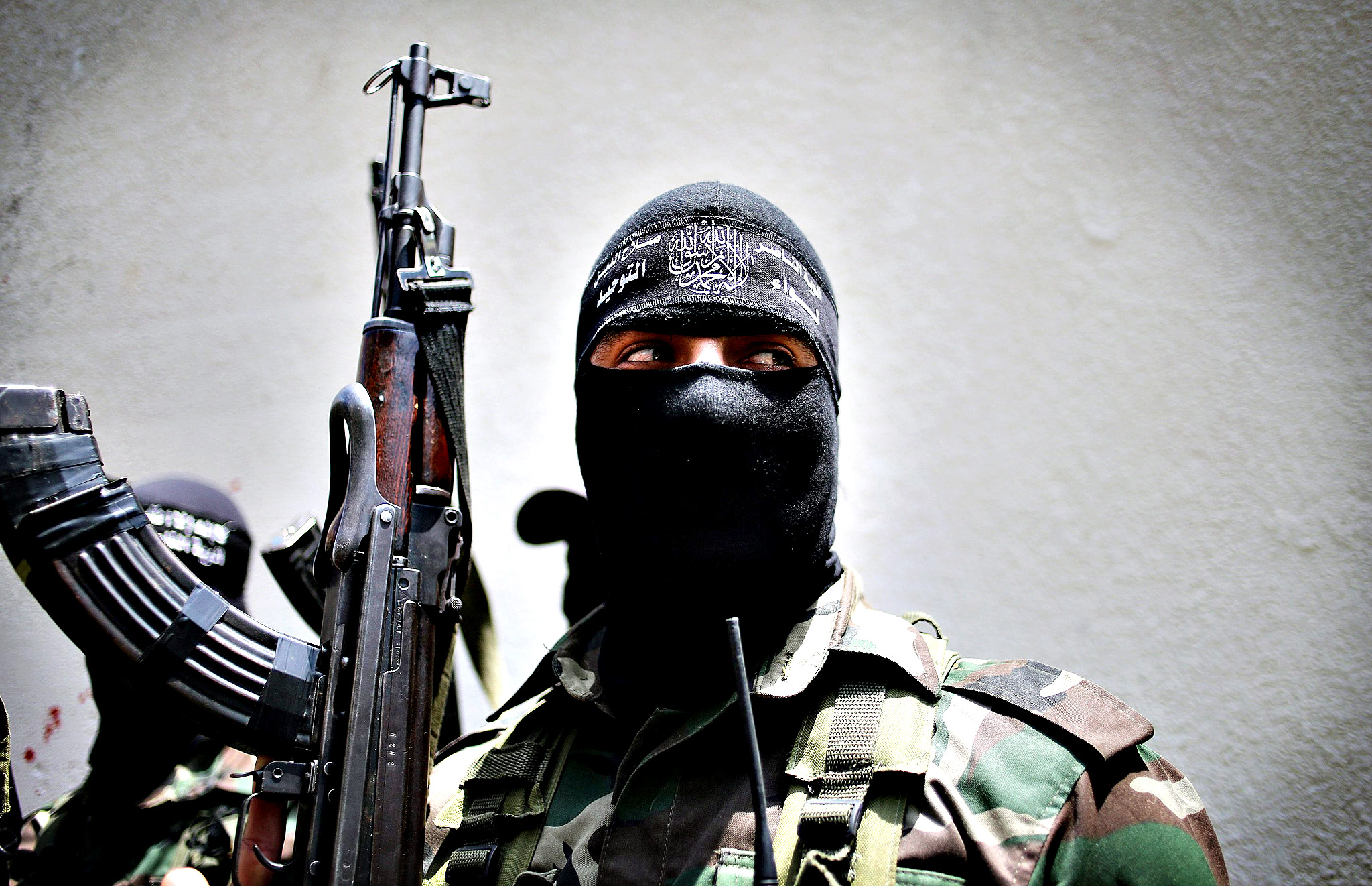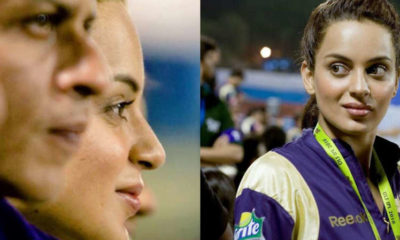Feature
Kashmiri Engineering student leaves studies to become militant

Jammu: The police in Jammu and Kashmir was investigating the case of an engineering student who left his studies to become a militant and his photograph holding an AK assault rifle was doing rounds on social media.
Mohammad Eisa Fazli, a resident of Shadab colony near Soura in the outskirts of Srinagar, went missing from his hostel room in Baba Ghulam Shah Badshah University (BGSBU) in Rajouri on August 17th.
Two days later a picture of him holding the rifle was uploaded on Facebook announcing that he had joined “jihad” (holy war).
He had joined B Tech (IT) course in the university in 2014.
According to the Facebook post, he joined Al-Qaeda cell, ‘Ansar Ghazwat-ul-Hind’, headed by engineering dropout Zakir Rashid Bhat alias Zakir Musa.
The police was trying to ascertain how the student got radicalised and left his studies after completing his sixth semester to join the militant group.
“The boy had gone to his home for a two-month holiday and is believed to have come in contact with militants there.
Srinagar Police is investigating the matter,” Senior Superintendent of Police, Rajouri, Yougal Manhas told media persons.
“As part of our investigation, we visited the university, conducted a search of his room and questioned his close friends and roommates. But nothing incriminating was found from his room,” the SSP said.
He said the questioning of his friends and roommates also yielded nothing as they were also shocked by his decision.
Engineering student leaves studies to become militant, photo getting viral on social media:
“We came to know that he had talked about Azadi (freedom) of Kashmir on several occasions but never expressed his desire to join militants,” the officer said.
He said there are two types of radicalisation-expressed radicalisation and internal radicalisation–and his case was an example of internal radicalisation.
Manhas said police has not come across any case of expressed radicalisation in the ongoing investigation so far.
Training and placement officer Sameer Raina said the university had been holding counselling sessions with the students from a long time to keep them away from militancy.
“We have been doing it and have not taken any further measure since the district administration is yet to confirm about the authenticity of the Facebook post,” Raina said.
He said the report of his joining militant ranks was on social media and they could not be sure that the news was “authentic but at the same time we cannot ignore such a development”.
The case had shocked the entire university and the matter was brought to the notice of police and civil administration, he said.
“The student was gentle and not a talkative one. He was good in academics and above average. He cleared his sixth semester exam on July 18 but did not join the seventh semester even after returning from holiday on time,” Raina said.
He said the university would take all necessary steps for the benefit of students.
In a statement, the university said the parents of the student were informed about his leaving the hostel without permission and asked to know his whereabouts and safety.
Entertainment
Meghalaya Reserves Legalized Gambling and Sports Betting for Tourists

The State Scores Extra High on Gaming-Friendly Industry Index
Meghalaya scored 92.85 out of 100 possible points in a Gaming Industry Index and proved to be India’s most gaming-friendly state following its recent profound legislation changes over the field allowing land-based and online gaming, including games of chance, under a licensing regime.
The index by the UK India Business Council (UKIBC) uses a scale of 0 to 100 to measure the level of legalisation on gambling and betting achieved by a state based on the scores over a set of seven different games – lottery, horse racing, betting on sports, poker, rummy, casino and fantasy sports
Starting from February last year, Meghalaya became the third state in India’s northeast to legalise gambling and betting after Sikkim and Nagaland. After consultations with the UKIBC, the state proceeded with the adoption of the Meghalaya Regulation of Gaming Act, 2021 and the nullification of the Meghalaya Prevention of Gambling Act, 1970. Subsequently in December, the Meghalaya Regulation of Gaming Rules, 2021 were notified and came into force.
All for the Tourists
The move to legalise and license various forms of offline and online betting and gambling in Meghalaya is aimed at boosting tourism and creating jobs, and altogether raising taxation revenues for the northeastern state. At the same time, the opportunities to bet and gamble legally will be reserved only for tourists and visitors.
“We came out with a Gaming Act and subsequently framed the Regulation of Gaming Rules, 2021. The government will accordingly issue licenses to operate games of skill and chance, both online and offline,” said James P. K. Sangma, Meghalaya State Law and Taxation Minister speaking in the capital city of Shillong. “But the legalized gambling and gaming will only be for tourists and not residents of Meghalaya,” he continued.
To be allowed to play, tourists and people visiting the state for work or business purposes will have to prove their non-resident status by presenting appropriate documents, in a process similar to a bank KYC (Know Your Customer) procedure.
Meghalaya Reaches Out to a Vast Market
With 140 millions of people in India estimated to bet regularly on sports, and a total of 370 million desi bettors around prominent sporting events, as per data from one of the latest reports by Esse N Videri, Meghalaya is set to reach out and take a piece of a vast market.
Estimates on the financial value of India’s sports betting market, combined across all types of offline channels and online sports and cricket predictions and betting platforms, speak about amounts between $130 and $150 billion (roughly between ₹9.7 and ₹11.5 lakh crore).
Andhra Pradesh, Telangana and Delhi are shown to deliver the highest number of bettors and Meghalaya can count on substantial tourists flow from their betting circles. The sports betting communities of Karnataka, Maharashtra, Uttar Pradesh and Haryana are also not to be underestimated.
Among the sports, cricket is most popular, registering 68 percent of the total bet count analyzed by Esse N Videri. Football takes second position with 11 percent of the bets, followed by betting on FIFA at 7 percent and on eCricket at 5 percent. The last position in the Top 5 of popular sports for betting in India is taken by tennis with 3 percent of the bet count.
Local Citizens will Still have Their Teer Betting
Meghalaya residents will still be permitted to participate in teer betting over arrow-shooting results. Teer is a traditional method of gambling, somewhat similar to a lottery draw, and held under the rules of the Meghalaya Regulation of the Game of Arrow Shooting and the Sale of Teer Tickets Act, 2018.
Teer includes bettors wagering on the number of arrows that reach the target which is placed about 50 meters away from a team of 20 archers positioned in a semicircle.
The archers shoot volleys of arrows at the target for ten minutes, and players place their bets choosing a number between 0 and 99 trying to guess the last two digits of the number of arrows that successfully pierce the target.
If, for example, the number of hits is 256, anyone who has bet on 56 wins an amount eight times bigger than their wager.




























